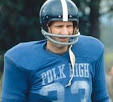 |
| Photo: Asbury Park Press |
Peter Solari Follow @4PeteSakeNY
With February fading fast, March madness is right around the corner! In fact, by this time next week, conference tournaments will be well underway. With March approaching, talks of teams on the preverbal "bubble," will be unavoidable. One of those teams in particular, however, stands out a little bit more than the others.
Most people around the country, even the die-hard college basketball fans, hadn't heard of Monmouth University before this season. And even as the Hawks' basketball program has risen in popularity, the team's creative bench has been a bigger story than their play on the court has. But make no mistake about it, Monmouth is for real, and even if they don't win the Metro Atlantic Athletic Conference (MAAC) Tournament next week, there should be no doubt about where the Hawks will go from there. They've already done enough to punch their ticket to the big dance.
On Friday night, the team won it's 24th game of the season and clinched the top seed in the MAAC, heading into next week's tournament. They also guaranteed themselves at least a share of the conference's regular-season title. A win in Monmouth's season finale against Niagara, or an Iona loss to Canisius, will give the Hawks their first MAAC regular-season title. In doing so, Monmouth would receive an automatic bid to the National Invitation Tournament (NIT), but the Hawks' sights are set higher than that.
Unfortunately, only 68 out of the 351 Division I programs will be invited to the NCAA Tournament. Monmouth could make the next couple of weeks a lot easier on themselves if they go to Albany, NY and win their conference tournament next week, but even if that doesn't happen, the Hawks have a solid resume to submit to the tournament's selection committee. If history is any indicator, Monmouth could be dancing next month, no matter what happens in Albany.
PART I: MOVING TO THE MAAC
Monmouth's journey to this point really started a couple years ago, when they made the jump from the Northeast Conference (NEC) to the MAAC. Historically, the MAAC has been far more productive than the NEC in March, and the NCAA has shown them a lot more respect too.In 1985, the NCAA Tournament field was expanded to 64 teams. All the teams were ranked from 1-64. Based on those rankings, each team was seeded from 1-16 and dispersed into four regions, with the last remaining team from each, reaching the Final Four. In 2001, the NCAA expanded the field to 65 teams by adding a play-in game. In this scenario, teams #64 and 65 would play one game to determine the tournament's final #16 seed. The reward for winning the play-in game was a first round matchup with the NCAA Tournament's overall #1 seed. This format remained in place through the 2010 NCAA Tournament.
From 2001 through 2010, neither the MAAC or the NEC received more than one bid to the NCAA Tournament in any season. In that span, each league was represented in the play-in game twice, which means that in those 10 seasons, a MAAC or NEC team was either the worst or second-worst team in the field, 40% of the time.
In 2002, Sienna, who made a surprise run in the MAAC Tournament, was an obvious play-in pick with an overall record of 16-18. In 2007, MAAC champion Niagara was selected for the play-in game. A year before that, in 2006, Monmouth represented the NEC in that same game, and Mount St. Mary's followed suit in 2008. Both the MAAC and NEC were 2-0 in play-in games during that era.
Knowing just this, it might appear as though the MAAC really isn't a "step-up" from the NEC, and that the leagues are very comparable. However, you need to dig a bit deeper to really see the differences.
In the eight seasons (between 2001 and 2010) that the NEC's sole tournament team wasn't selected for the play-in game, they were awarded the following seeds in the NCAA Tournament: 16, 14, 15, 15, 16, 16, 15, 15. All eight of those teams lost in the first round of the tournament. In contrast, MAAC teams were seeded as follows, in non-play-in years: 14, 14, 12, 14, 13, 13, 9, and 13. In those seasons, MAAC teams won three first round tournament games. In 2004, #12 Manhattan knocked off #3 Florida. In 2008, #13 Sienna beat Vanderbilt in the first round and followed it up in 2009, beating #8 Ohio State as a #9-seed. The difference between a 14-seed and 16-seed may not seem like much, but it's truly monumental in the NCAA Tournament.
No team seeded 16th has ever won an NCAA Tournament game. However, according to the The Washington Post, 15-seeds have won a tournament game seven times since the field expanded to 64. Teams seeded 14-seeds have beaten 3-seeds 20 times in that span, including twice in 2015. 13-seeds have beaten 4-seeds 25 times. A 12-seed over a 5-seed has happened 44 times! The probability of winning a tournament game as an underdog, gets higher as the seed gets lower. These statistics alone were enough reason for Monmouth to join the MAAC.
In 2011, the NCAA again expanded the tournament field, to 68 this time, by adding three play-in games, for a total of four, with one occurring in each region. In this scenario, known as the "First Four," teams ranked 65-64 will play single elimination games to determine the NCAA Tournament's last two #16-seeds. The four lowest ranked at-large bids, meaning teams that didn't earn their league's automatic tournament bid, will play single elimination games to determine the last two at-large teams in the field, often resulting in a #11 or #12 seed in the tournament, though that isn't set in stone. This format is used through today.
Through the first five complete seasons under this format (2011-2015), the NEC has been one-bid league every year. In three of those five seasons, the NEC's sole tournament representative participated in the First Four, and lost two of those contests. All three of those teams (Long Island in 2013, Mount St. Mary's in 2014, and Robert Morris in 2015) were trying to play their ways into the field of 64 as #16-seeds, meaning they were ranked in the bottom four (65-68), of the overall tournament field. In the other two seasons of the First Four era, NEC teams were awarded a #15-seed in 2011 and a #16-seed in 2012.
If you're not keeping score at home, here's where our tally stands: since the NCAA Tournament field expanded beyond 64 teams in 2001, the NEC has never received more than one bid to the tournament. In that span of 15 complete seasons, NEC teams in the tournament have appeared in five play-in games as #16-seeds, and received four outright #16-seeds, for a grand total of nine #16-seeds overall. Over that time, the NEC has also been represented by five #15-seeds, and just one #14-seed.
MAAC teams, on the other hand, have only only played in two First Four games since 2011. Last season, Manhattan lost in the tournament's opening round, for the right to be seeded 16th in the tournament's midwest region. In 2012, Iona lost to Brigham Young in the opening round. While this was technically a First Four game, the teams were playing for the right to enter the field of 64 as a #14-seed. Iona had been knocked off by Fairfield in the MAAC Tournament and Loyola (MD) won the league's automatic bid, as a #15-seed, to the NCAA Tournament. This means that not only did the MAAC receive multiple invites to the big dance since 1995, but neither of their representatives were ranked in the bottom six, of the overall field.
For comparison, here's how the MAAC has performed in the 15 full seasons since the field expanded beyond 64: Since 2001, the MAAC has been a one-bid league 14 times, and a two-bid league one time. In that span, MAAC teams in the tournament have appeared in three play-in games as #16-seeds, winning two, and have never received an outright #16-seed. The conference has also been represented by #15-seeds twice, and #14-seeds five times, including one First Four game. The MAAC has also been represented by four #13-seeds, one #12-seed, and one #9-seed, and has three first round tournament wins under it's belt. In 15 NCAA Tournaments since 2001, only twice has the NEC been represented by higher seeded team than the MAAC. In 2007, the MAAC's Niagara had to win a play-in game to get into the field of 64 as a #16-seed, while the NEC's Central Connecticut State was awarded an outright #16-seed. In 2002, Siena had to win a play-in game, while Central Connecticut State received a #14-seed with an impressive 27-4 record.
Overall, since the NCAA Tournament expanded to 64 teams in 1985, the NEC has never received more than one bid to any tournament, and has won two play-in games, and one First Four play-in game. On the contrary, in that same span, the MAAC has received multiple tournament bids twice, and a league team has won a tournament game seven times, including two play-in wins.
Okay! So, the MAAC isn't exactly the ACC, the SEC, or the Pac 12, but given these statistics, it's hard to argue that Monmouth hasn't put themselves in a better position heading into March madness by making the jump. Even if the Hawks win their league tournament, just playing in the MAAC almost guarantees they'll be seeded better than they would have with an identical record and the same out-of-conference schedule in the NEC.
League affiliation is definitely a factor when selecting tournament teams. There's a reason that middle-of-the-road teams in power conferences are invited to the NCAA tournament and mediocre mid-majors have a tough time getting asked to the College Basketball Invitational (CBI). Monmouth has put themselves in a position to succeed, and March is the time to do just that.
Could the Monmouth Hawks be this year's Gonzaga, George Mason, Butler, or VCU? We're going to find out real soon. Stay tuned to The Monday Morning Quarterback and For Pete's Sake for part two of this series, where we'll examine how the 2016 Monmouth Hawks stack up against mid-majors of the past, who turned their big dance invites into Cinderella stories.
















